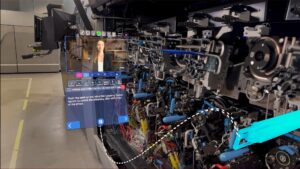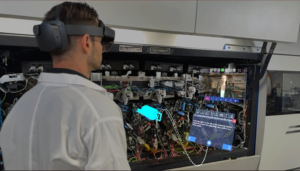On October 1, 2024, Microsoft announced that they are going to discontinue its HoloLens 2 mixed reality headset. The deadline for receiving support and security updates is December 31, 2027.
This Microsoft decision puts businesses currently using HoloLens in a difficult position. Companies are now facing compatibility issues struggling to integrate workflows and processes with new technologies. The end of support and updates also leaves businesses using HoloLens for training, support, and marketing with device obsolescence and search for alternatives.
Like many others, we at frontline.io are now facing the same issue as many companies including our clients do. In this article, we evaluate several HoloLens alternatives and instruct on how to transfer your business processes to a new solution as seamlessly as possible.
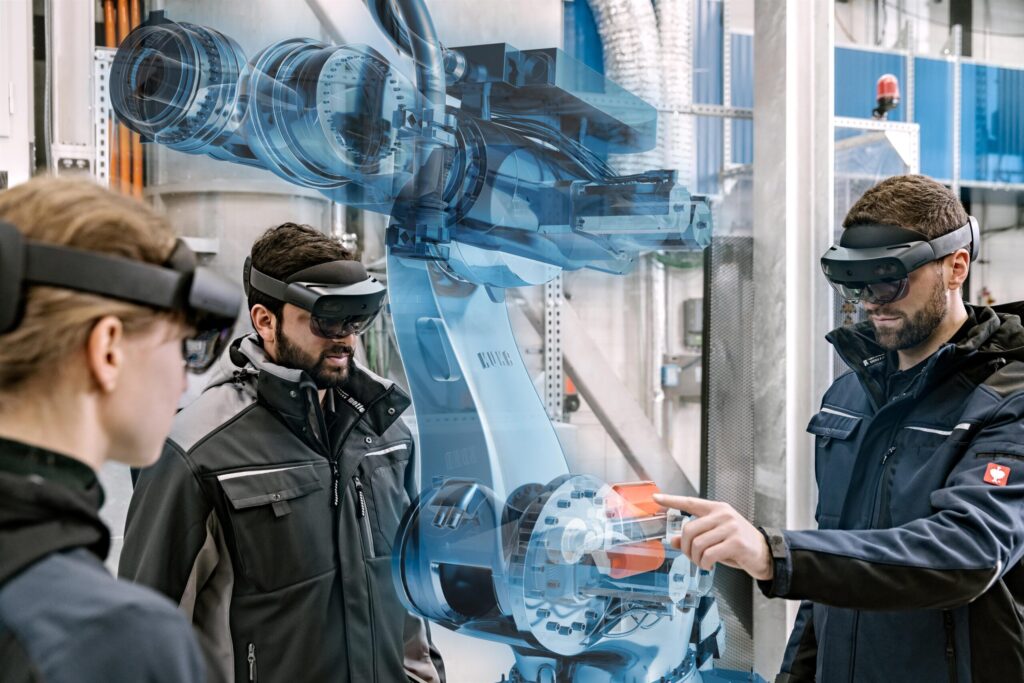
What Challenges Companies Face with HoloLens Discontinuation
Lack of new devices
As Microsoft announced the last-time buy and is not going to produce any additional units, companies relying on HoloLens cannot increase the number of devices installed or replace the broken ones.
Loss of support
As Microsoft announced that HoloLens support is set to stop by the end of 2027, businesses are going to be left with the hardware vulnerable in terms of security and maintenance. This means that without regular updates, devices become more susceptible to cybersecurity threats. Furthermore, resolving issues that may occur to the hardware is going to take much more time than it used to.
Compatibility issues
Companies will now have to adapt to any new device they choose. This includes content transition that can be time-consuming which is especially problematic for businesses having a lot of instructions and procedures built exactly for HoloLens.
Device Obsolescence
As Microsoft no longer plans to produce HoloLens, the existing devices are sooner or later at risk of becoming outdated or replaced. AR is developing rapidly, and hardly any device can survive the competition without regular updates.
frontline.io is a SaaS platform that helps businesses deliver scalable, hands-free training, maintenance, and support using XR technology. Our goal is to make the loss of HoloLens as painless as possible for organizations. Book a free consultation with our manager to discuss your company needs and find a personalized solution.
Book a Free ConsultationWhat to Consider Looking for a HoloLens Alternative
Device performance
Looking at device specifications, you should consider two key parameters: See Through and Pass Through.
See Through
See-through devices are the ones in which the user can see the real world through glasses. These are the same glasses that augmented data is reflected on. Such devices are the best fit for field activities as the user sees the real world with no mediation. HoloLens is a see-through device.
Pass Through
Pass-through devices are the ones in which all the information is reflected to the user digitally, including the soundings. Such devices are best for training in a controlled environment as they provide high image quality. An additional important parameter to check in device specifications is the field of view.
Field of view aka FOV
The field of view indicates the width of the screen a user has in front of their eyes. From the user’s point of view, the wider the FOV – the better. This parameter is measured horizontally, vertically, and diagonally. The horizontal FOV is considered the most important. HoloLens 2 horizontal FOV is 40˚.
Compatibility with Your Existing Ecosystem
First of all, your new hardware should work well with your company’s software and overall IT infrastructure to avoid duplicate costs there. Secondly, it should be easy for you to transfer your training and maintenance content as well as data to a new device.
Whatever device you choose as a HoloLens replacement, frontline.io will get you covered. We already support the widest range of devices in the XR ecosystem including HoloLens and, what’s even more important, content created on the frontline.io platform will be compatible with future hardware. This means your business won’t have to deal with a HoloLens obsolescence scenario again.
Device Durability, Updates, and Support
Choosing the right HoloLens alternative is crucial for organizations as it’s usually a long-term costly investment and a part of a company’s digital transformation journey. This is why it’s essential to thoroughly evaluate the use cases for your glasses. For example, if your company is using them for field workers day-to-day training, the durability and strength of material are key characteristics to explore.Regular updates and support throughout the whole glasses’ lifetime are another important aspect. Check how often a vendor releases updates: frequent updates are important not only in terms of new functions but also in terms of security. You’ll also need to make sure technical support and repairs are available as well as replacement units in case any part of a device gets broken.
Cost-effectiveness
Choosing the new HoloLens alternative, it’s also necessary to look for the right balance between functionality and affordability. At the very basics, check if a device has all the required features you’re looking for. Other nice-to-have functions that can be useful for your organization will be a good addition too. Scalability is also essential: if your business is changing fast adding new features and raising the bar for hardware functionality, your devices should be able to keep up.Overview and Comparison of HoloLens Alternatives
Magic Leap 2
A lightweight AR headset designed with a focus on enterprise applications, offering a wide field of view and advanced optics.
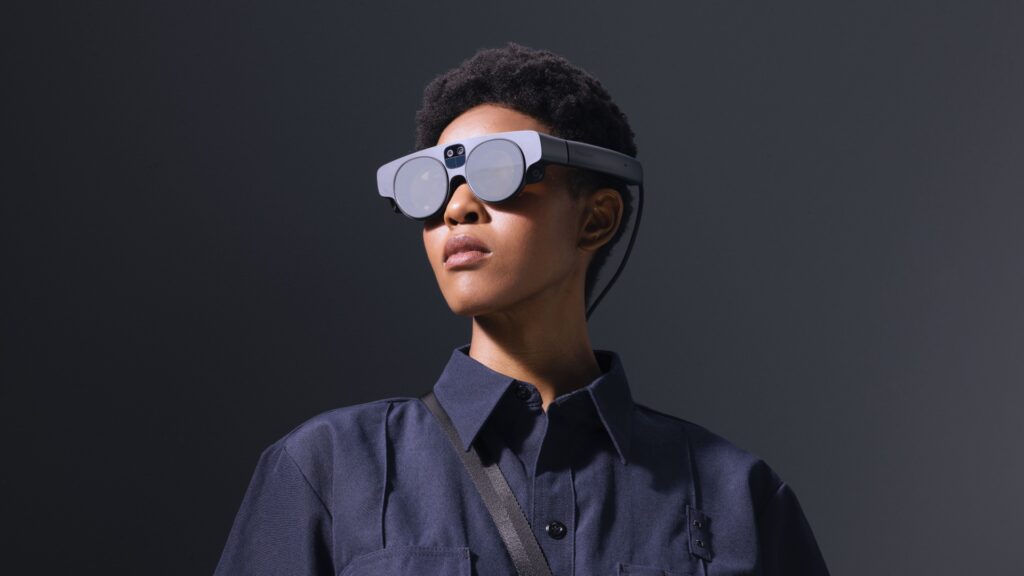
Key Features:
- See-through device.
- Horizontal FOV: 44˚.
- Display: 1440×1760 pixels per eye with a 70° diagonal field of view. Adjusts brightness for enhanced visibility in varying light conditions.
- Weight: 260 grams, with a separate compute pack to reduce head strain.
Lenses: Transparent lenses for a comfortable experience wearing the device without causing problems for the eyes and getting motion sickness. - Main Use Cases: Healthcare, design visualization, and manufacturing procedures.
Warranty: 1 year.
Price: ∼$3,500
Meta Quest
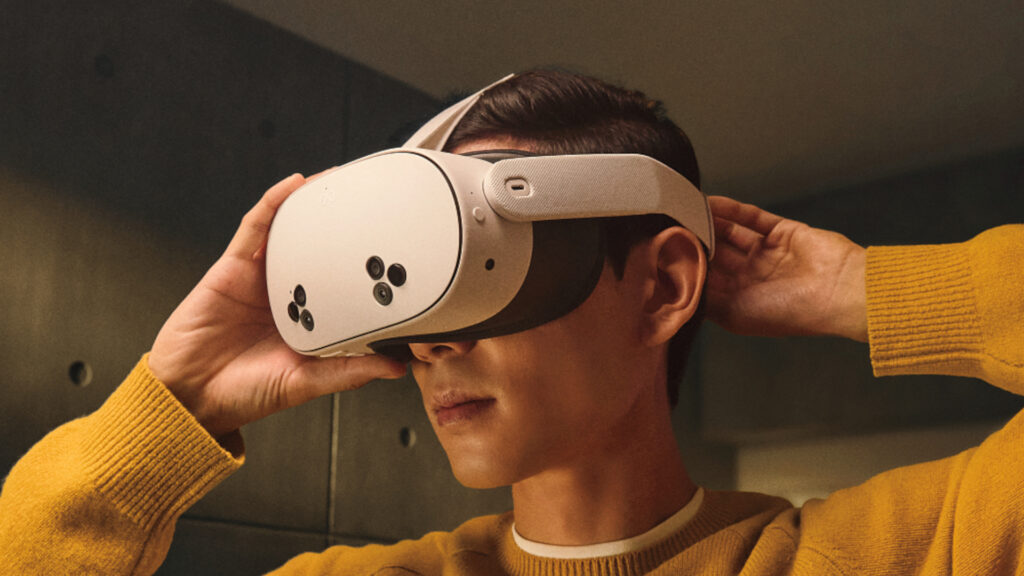
Key Features:
- Pass-through device.
- Horizontal FOV: 110˚.
- Display: 1,832 x 1,920 pixels per eye.
- Weight: 722 grams.
- Lenses: “Thin pancake lenses”, as Meta states on their website, provide sharp images and bright colors.
- Main Use Cases: Professional collaboration, immersive meetings, and mixed reality applications with advanced features for enterprise environments.
- Warranty: 1 year.
DigiLens ARGO
Lightweight, standalone augmented reality (AR) headset designed for enterprise and industrial applications.
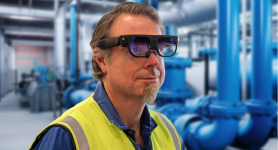
Key Features:
- See-through device.
- Horizontal FOV: 26˚.
- Display: 1280 x 720 pixels per eye.
- Lenses: 85% transparent lenses and a see-through technology enable users to see the real-world environment around them all the time. It’s critical for medical and industrial cases when people can’t rely just on glasses as anything like a battery blackout can cause problems and a user should always be present in reality.
- Main Use Cases: Healthcare, industrial, logistics, military and defense, telecommunications.
- Warranty: n/a
Apple Vision Pro
Mixed reality headset that combines augmented and virtual reality capabilities. Serves for both professional and entertainment purposes.
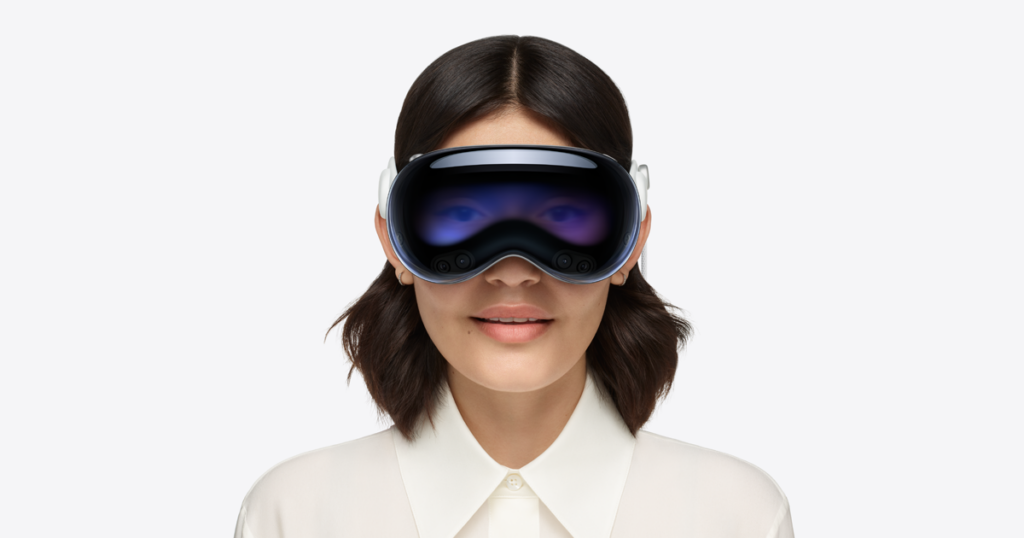
Key Features:
- Pass-through device.
- Horizontal FOV: ≈105˚.
- Display: 3660×3200 pixels per-eye.
- Weight: 600-650 grams depending on the configuration.
- Lenses: Advanced catadioptric optics with over 85% transparency enable comfortable blending of digital content with the physical world while maintaining visual clarity and minimal distortion.
- Main Use Cases: Productivity, entertainment, communication.
- Warranty: 1 year.
Price: from $3,499
SiNGRAY by HMS
SiNGRAY AR series are lightweight AR glasses equipped with AI functions, which use high-precision object tracking, anchoring, gesture recognition, and other functions to develop various industrial AR applications to do remote support and guidance.
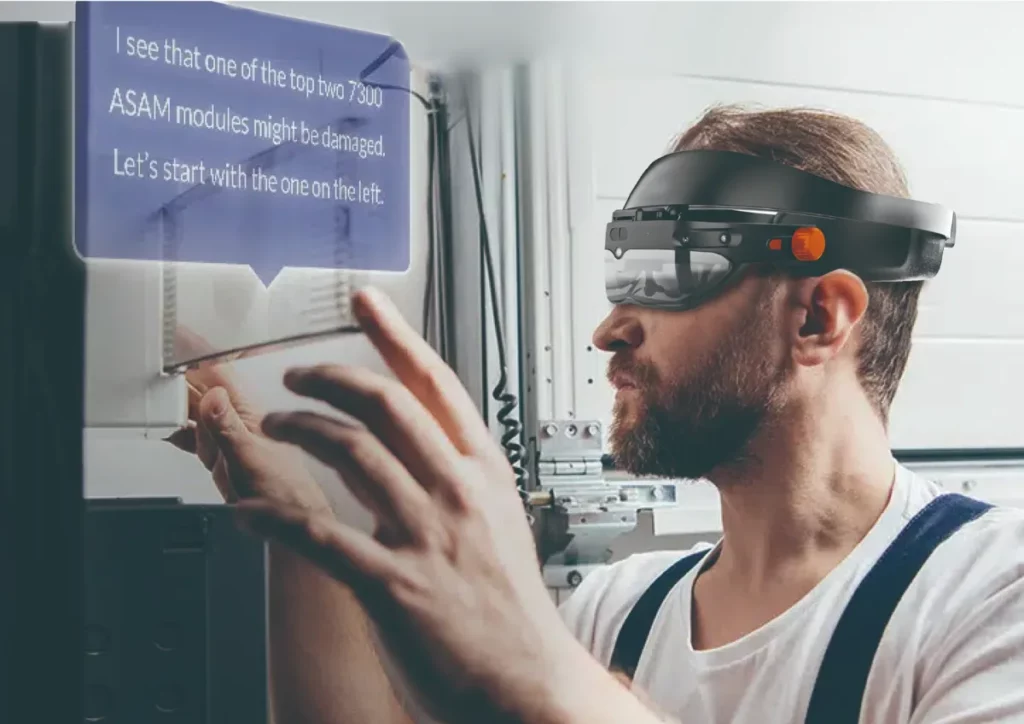
Additional devices
Key Features:
- See-through device.
- Horizontal FOV: 41˚.
- Display: 1920×1200 pixels per eye.
- Weight: 330 grams.
- Lenses: A free-form prism optical display reduces tiredness even after long usage and increases work efficiency. 2 fisheye lens cameras provide head-track control to prevent dizziness.
- Improves work efficiency even when worn for long periods of time
- Main Use Cases: Industrial training, field operations, logistics, remote training.
- Warranty: 1-2 years.
Price: upon request
More new headsets are coming soon. Google and Samsung have recently announced the new Dubbed Android XR and Vuzix is going to reveal their new pass-through glasses at CES 2025. Both announcements are very promising for the future of the XR devices market.
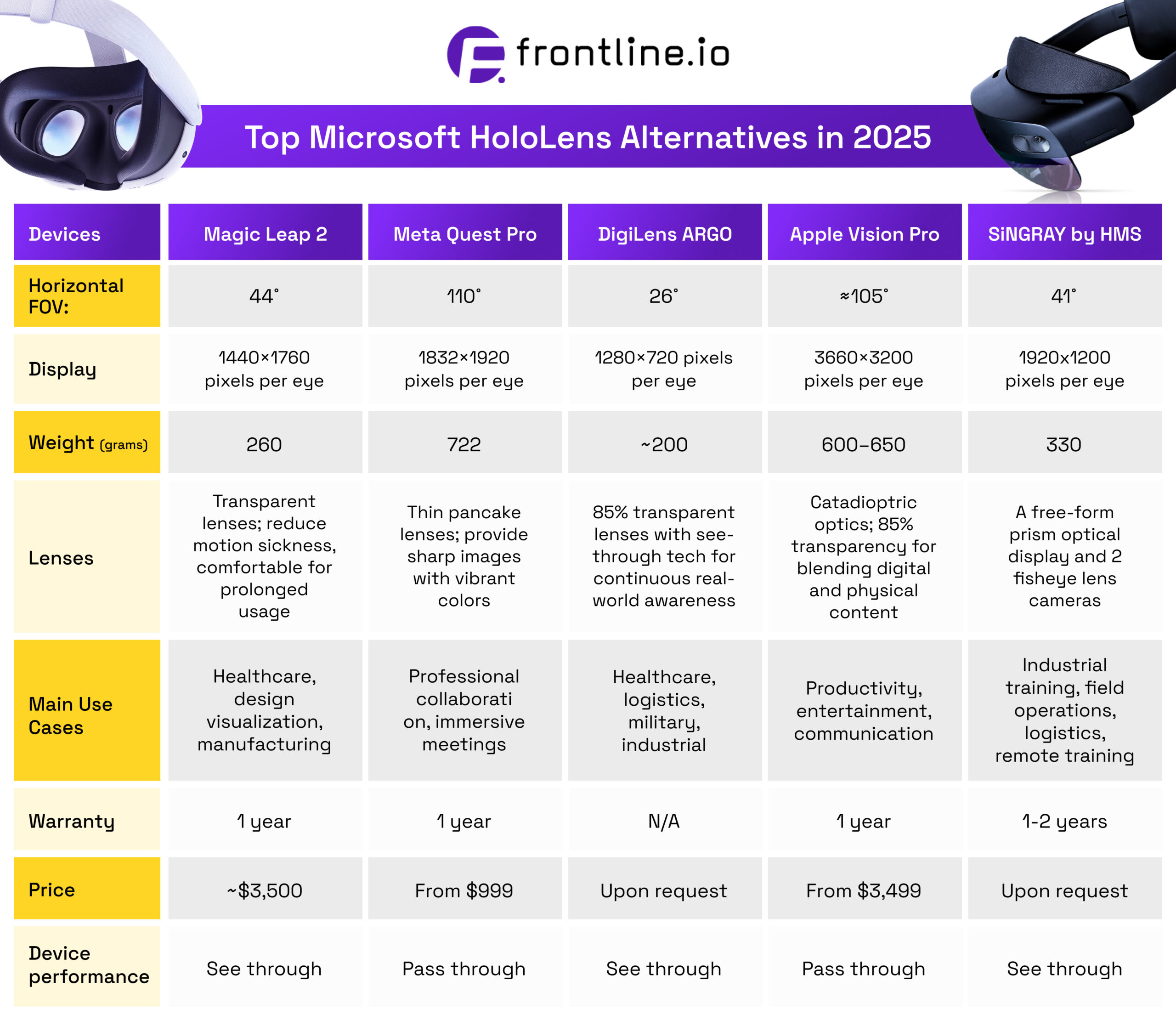
Discuss your needs with us and we’ll provide the solution for your training, support, and field service needs so that you won’t need to recreate your content and procedures again.
Book a Free ConsultationWhy Choose frontline.io for Your Transition
Easy Migration to a New Hardware
You won’t need to recreate your content again. At frontline.io we’ll be happy to assist in bringing all your training materials and instructions to our platform where content will be adapted for any XR device, PC, or smartphone. This includes, of course, HoloLens if you prefer to stick to it for as long as it lasts.
Multi-Device Support
frontline.io is a platform designed specifically for training, remote support, and maintenance, so we understand that dependence on just one device can be inconvenient. We enable frontline workers, support managers, and training instructors to use any device they have to get what they need done – from smartphones and tablets to laptops and XR headsets.
Commitment to the Future
We’re prepared for technological advancements that may be affecting our clients. Content created on frontline.io will be compatible with future hardware solutions so that your business is ready and safe.
XR Device Compatibility
We already support the widest range of devices in the XR ecosystem and are regularly adding more.What Are the New Possibilities with frontline.io Beyond Microsoft Guides
Real-time, interactive digital models of physical assets. Whether it’s machinery with a few hundred components or complex systems with up to 200,000 parts, we can handle this. Best of all, frontline.io Digital Twin creation takes just a few hours. You’re free to use it for any business needs: training, support, maintenance, marketing and sales.
All in all, businesses are now put in a difficult position to make the right decision for a HoloLens alternative. There’s a lot to evaluate: ss we saw, comparing various solutions, differences between solutions in terms of price, use-cases, and technical parameters are very significant. And there’s probably more brand-new hardware coming soon.
We at frontline.io understand that there’s already a lot on your plate on the hardware side, so we try to make the software side as smooth as possible enabling seamless content and procedures transfer. Contact us if you want to evaluate options, discuss your business ar training, remote support, and field operations needs, or just learn more.
Disclaimer: This article is based on publicly available resources and may contain inaccuracies.
